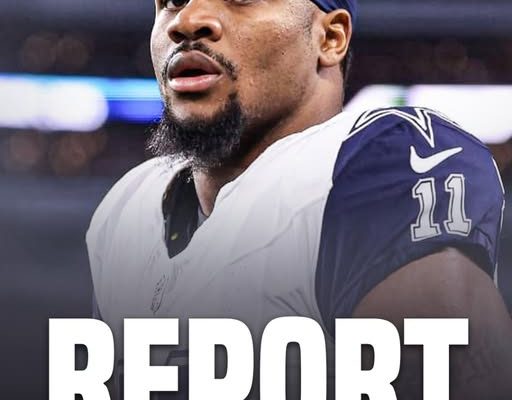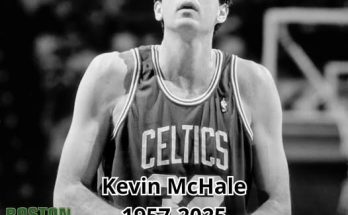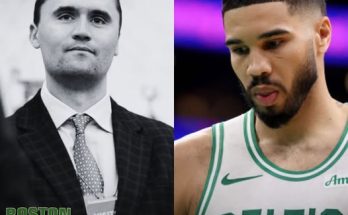The Dallas Cowboys and their star pass rusher Micah Parsons find themselves at a pivotal crossroads in contract negotiations, as recent reports reveal that the two parties are actually “further away” from reaching a deal now than they were just a few months ago in late March. This development has sent ripples through the NFL community, as Parsons has quickly established himself as one of the league’s premier defensive talents since entering the league. The uncertainty surrounding his contract extension raises significant questions about the future of both the player and the franchise. Understanding the complexity of these negotiations requires a deep dive into the circumstances surrounding Parsons’ rise, the Cowboys’ salary cap situation, the strategic priorities of the team, and the broader landscape of NFL contracts for elite edge rushers.
Micah Parsons emerged in the NFL as an explosive and versatile defender, quickly proving that he is not just a rookie sensation but a foundational player for the Cowboys’ defense. Since being drafted in the first round of the 2021 NFL Draft, Parsons has transcended expectations with his unique blend of speed, power, and football IQ. Initially brought in primarily as a linebacker, Parsons has frequently been deployed as a pass rusher, where his ability to pressure quarterbacks and disrupt offensive schemes has drawn comparisons to some of the game’s all-time greats. His impact on the Cowboys’ defense cannot be overstated. In his first two seasons, he has amassed double-digit sacks, forced fumbles, and demonstrated an uncanny ability to make game-changing plays. For Dallas, securing Parsons long-term is a critical priority, yet reaching a contractual agreement that satisfies both sides has proven more difficult than anticipated.
Negotiations between star players and their teams are always intricate, but when it comes to a rising star like Parsons, the stakes are especially high. The Cowboys face a challenge balancing their salary cap constraints with Parsons’ legitimate desire to be compensated among the highest-paid edge rushers in the league. Reports indicate that as of late July 2025, the gap between the Cowboys’ offer and Parsons’ expected contract has widened compared to where it stood in March, signaling increased frustration or more aggressive demands from one or both sides. This backslide in progress could stem from several factors including changes in the NFL market, evolving priorities from the Cowboys’ front office, or Parsons’ representation recalibrating its expectations based on recent performances around the league.
The salary cap in the NFL is a hard cap, meaning every team must manage its finances to fit under a fixed number set by the league each season. The Cowboys, traditionally a team that aggressively pursues marquee talent, have faced mounting pressure in recent years to maintain a competitive roster while balancing escalating player salaries. Parsons’ contract would not only impact his own earnings but also influence the team’s ability to sign other key players or pursue free agent acquisitions. This financial balancing act adds a layer of complexity to the negotiations, as the Cowboys must ensure they do not hamstring themselves for future seasons by overcommitting to one player. Conversely, Parsons is rightly aware of his value and the limited window players have at peak performance to maximize their earnings. His representatives are pushing for a deal that reflects his elite status and future potential, which naturally demands a premium in salary and guarantees.
One crucial element affecting these negotiations is the recent trends in contracts for top-tier edge rushers across the NFL. The market for pass rushers has become increasingly lucrative as teams place greater emphasis on disrupting opposing quarterbacks. Players like Nick Bosa, T.J. Watt, and Joey Bosa have set benchmarks with contracts paying upwards of $25 million annually, coupled with substantial guaranteed money. Parsons’ camp is undoubtedly using these deals as comparables, arguing that he should be compensated in a similar range given his performance metrics and impact on the field. The Cowboys, however, may be hesitant to match or exceed these figures immediately, especially if they feel there is some leverage in waiting or if they believe Parsons’ value can be maximized in a different contract structure or timeline.
Further complicating matters is the Cowboys’ current roster construction and their broader team-building philosophy. The franchise under owner Jerry Jones has often been criticized for uneven salary allocation or prioritizing offensive stars at the expense of defense. Parsons’ contract negotiations highlight a deeper organizational question: how much is Dallas willing to invest in locking down its defensive cornerstone versus spreading resources to bolster other positions? While it is clear that Parsons is a vital asset, the front office must weigh the overall team needs and the long-term sustainability of the roster. This might explain the cautious approach or seeming regression in negotiations since March, as Dallas evaluates its full picture before committing to a massive extension.
There is also a psychological and strategic dimension to these negotiations that is often overlooked by fans and media. Contract talks can become games of patience, leverage, and signaling. Both sides may use public reports and leaks as part of a negotiation tactic, attempting to sway public opinion or apply pressure. Parsons and his agents want to demonstrate that they are willing to hold firm or even walk away if the offer is not right, while the Cowboys want to show they are reasonable but not desperate. The widening gap in reported progress could be an intentional move to set the stage for a more favorable deal later. However, it is a risky strategy because it risks alienating a key player or allowing rival teams to swoop in with offer sheets, especially if Parsons reaches restricted free agency status in the future.
The impact of this contract stalemate goes beyond just the two parties involved. For the Cowboys’ fanbase, Parsons’ uncertainty is a source of concern and frustration. He represents the kind of dynamic player who can elevate the team to playoff and Super Bowl contention, and any delay or breakdown in securing his future creates doubt about Dallas’ ability to maintain a championship-caliber defense. Fans are aware that losing Parsons or distracting him with contract disputes could derail the momentum the team has built defensively. Moreover, the NFL media closely watches these negotiations as a barometer for the Cowboys’ front office competency and priorities. How Dallas manages this situation will influence perceptions about the team’s culture, stability, and competitiveness.
From Parsons’ perspective, the timing and handling of these talks are critical for his career trajectory. As a young player still proving his worth in the league, he needs a contract that not only rewards his current production but also secures his financial future against the risks of injury or performance fluctuations. The structure of the contract, including signing bonuses, guarantees, incentives, and length, will determine how protected he is while allowing him to continue thriving on the field. His camp’s harder stance could be a reflection of the player’s confidence in his value and a refusal to settle for less than market value. Yet, this approach carries the risk that if talks drag on too long or negotiations collapse, Parsons could face uncertainty entering critical years of his career.
On the flip side, the Cowboys have a reputation for managing player contracts with a mix of pragmatism and aggressiveness. The organization’s approach often involves pushing for deals that protect the team’s flexibility while rewarding players fairly. How the Cowboys ultimately resolve this impasse will reveal a lot about their willingness to prioritize Parsons and commit long-term to a defensive identity. The negotiation outcomes also set precedents for how the team handles future extensions for emerging stars, influencing the franchise’s reputation in the broader NFL market.
One potential outcome of the current state of negotiations is a delayed agreement that comes closer to the start of the 2025 NFL season or even beyond. The NFL calendar often sees key deals finalized just before or during training camps as both sides adjust strategies and market conditions. Waiting allows the Cowboys to better understand their roster needs and salary cap space, while Parsons’ camp can monitor developments with other free agents or contract trends. However, delay also adds stress to preparation, as contractual uncertainty can affect player focus and team chemistry.
Another possibility is that the widening gulf in negotiations forces the Cowboys to make difficult roster decisions or explore alternative strategies, such as trading Parsons or restructuring the roster to accommodate his contract demands later. While unlikely given Parsons’ value, the business of the NFL sometimes necessitates hard choices, especially if financial limitations become more acute. The team may also consider short-term bridge deals as a stopgap while keeping the door open for a larger contract once circumstances change.



